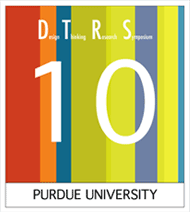Description
Creativity is an essential aspect of design thinking. Being able to describe creativity and creative processes is important for developing future designers. While much research has been undertaken describing creativity in design, there is very little investigating how creativity and creative thinking varies across disciplines. A coding scheme involving six separate codes was developed initially from the literature, refined and then used to describe how creativity and creative thinking was apparent in the DTRS 10 datasets of Junior Industrial Design, Graduate Industrial Design, Mechanical Engineering, Choreography and Entrepreneurship. Based on this analysis, conclusions on how creativity and creative thinking varied across the datasets were also reached. It was found that while all datasets analyzed included Process, Product and Press codes, how these were identified in the data varied. The three Personal codes were only identified in three of the datasets. This research has implications for investigating how to develop creativity and creative thinking skills in all designers.
Keywords
Creativity, variation, design thinking, disciplines
Date of Verison
January 2014
DOI
10.5703/1288284315951
Recommended Citation
Mann, Llew and Tekmen Araci, Yasemin, "Describing Creativity in Design Across Disciplines" (2014). Design Thinking Research Symposium. 3.
https://docs.lib.purdue.edu/dtrs/2014/Multiple/3
Presentation slides
Included in
Engineering Education Commons, Higher Education and Teaching Commons, Industrial and Product Design Commons
Describing Creativity in Design Across Disciplines
Creativity is an essential aspect of design thinking. Being able to describe creativity and creative processes is important for developing future designers. While much research has been undertaken describing creativity in design, there is very little investigating how creativity and creative thinking varies across disciplines. A coding scheme involving six separate codes was developed initially from the literature, refined and then used to describe how creativity and creative thinking was apparent in the DTRS 10 datasets of Junior Industrial Design, Graduate Industrial Design, Mechanical Engineering, Choreography and Entrepreneurship. Based on this analysis, conclusions on how creativity and creative thinking varied across the datasets were also reached. It was found that while all datasets analyzed included Process, Product and Press codes, how these were identified in the data varied. The three Personal codes were only identified in three of the datasets. This research has implications for investigating how to develop creativity and creative thinking skills in all designers.


Comments
Conference presentations were developed into a book chapter that was published in “Analyzing Design Review Conversations,” edited by Robin S. Adams and Junaid A. Siddiqui (2016, Purdue University Press), which can be found here:http://www.thepress.purdue.edu/titles/analyzing-design-review-conversations.